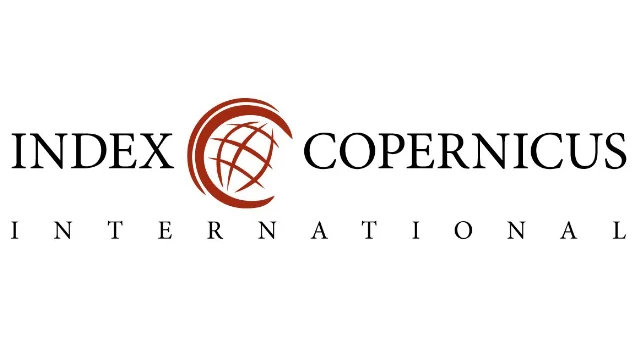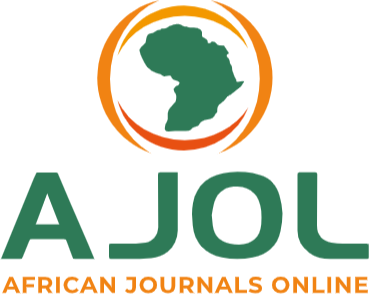Musanga cecropioides Sawdust as an Adsorbent for the Removal of Methylene Blue from Aqueous Solution
Keywords:
Water, contamination, dye, remediation, adsorption, wood saw dustAbstract
Adsorption is an established method of removing dyes and other pollutants from aqueous solution. The success of adsorption depends on the nature of adsorbent. In this work, saw dust from musanga cecropioides is used for the removal of methylene dye from aqueous solution. Effect of contact time, adsorbent dosage, temperature and concentration of the dye were investigated. The results indicated that at various adsorption dosage, concentrations, contact time and temperature, the equilibrium amount of dye adsorbed, qe (mg/g) ranged from 1.86 to 5.32, 3.44 to 4.55, 3.73 to 4.58 and from 0.89 to 3.88 respectively. The kinetic of the adsorption was best described by pseudo second order kinetics. The adsorption of the dye on the surface of the wood saw dust was exothermic, spontaneous and favours Langmuir and Temkin isotherm. Based on the observed trend in the variation of extent of adsorption with temperature and calculated values of free energy changes, the adsorption follows both physical and chemical adsorption mechanism. However, physisorption dominated the adsorption at lower temperature. The use of saw dust from musanga cecropioides wood is hereby recommended for commercial applications.
Downloads
Published
Issue
Section
Similar Articles
- Vincent Oseikhuemen Odia-Oseghale, Joseph Odion Odia-Oseghale, Environmental Implications of Quarrying and Waste Management: A Case Study of Okhoro, Benin City , Communication In Physical Sciences: Vol. 12 No. 4 (2025): VOLUME1 2 ISSUE 4
- Attah Chuks Emmanuel, Removal of Cadmium Ion from Aqueous Solution by oyster-based Based Calcium Oxide Nanoparticles , Communication In Physical Sciences: Vol. 10 No. 3 (2023): VOLUME 10 ISSUE 3 (2023-2024)
- Emmanuel Michael Umoh, Edidiong Sunday Sam, The Recycling of Sawdust Waste into Particleboard Using Starch-Based Modified Adhesive , Communication In Physical Sciences: Vol. 6 No. 1 (2020): VOLUME 6 ISSUE 1
- Kantoma, D.,, Green Synthesis of Silver nanoparticlesNanoparticles(AgNPs) using Calotropis procera leaves Leaves extract Extract and it adsorption Adsorption properties Properties for the removal Removal Chromium(III) ion. of Cr3+ from Petroleum Waste Water , Communication In Physical Sciences: Vol. 11 No. 1 (2024): VOLUME 11 ISSUE 1
- Kantoma, Dogara , Nwokem, Calvin Onyedika, Zakka Israila Yashim, Zaharaddeen Nasiru Garba, Green Synthesis of Silver Nanoparticles(AgNPs) using Calotropis procera Leaves Extract and it Adsorption Properties for the Removal of Cr3+ from Petroleum Waste Water , Communication In Physical Sciences: Vol. 10 No. 3 (2023): VOLUME 10 ISSUE 3 (2023-2024)
- Blessing Ebong, Review on Microplastic-Polymer Composite Interactions: Assessing Contaminant Adsorption, Structural Integrity, and Environmental Impacts , Communication In Physical Sciences: Vol. 12 No. 3 (2025): VOLUME 12 ISSUE 3
- Aniekan Udongwo, Oluwafisayomi Folorunso, Resource Recovery from Maize Biomass for the Synthesis of SiO2 Nanoparticles and Crystallographic Analysis for Possible Applications , Communication In Physical Sciences: Vol. 12 No. 2 (2025): VOLUME 12 ISSUE 2
- Chidumebi Uzoho, The Role of Contaminated Water in Food Poisoning: An Assessment of Agricultural and Processing Practices , Communication In Physical Sciences: Vol. 12 No. 3 (2025): VOLUME 12 ISSUE 3
- Usoro M. Etesin, Hydrochemical study of shallow ground water in Ikot Abasi Coastal Aquifer , Communication In Physical Sciences: Vol. 7 No. 3 (2021): VOLUME 7 ISSUE 3
- Abiodun Rasheed Omokanye, Benefit Onu, A Multi-Source Analysis of Water Supply Challenges in Offa Local Government Area, Kwara State, Nigeria , Communication In Physical Sciences: Vol. 11 No. 2 (2024): VOLUME 11 ISSUE 2
You may also start an advanced similarity search for this article.




